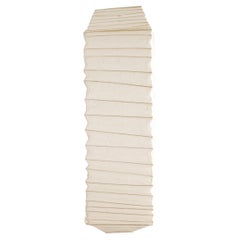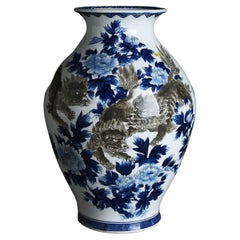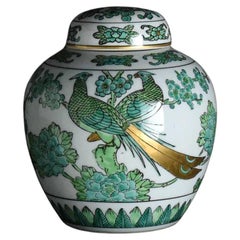Japanese Furniture
1950s Mid-Century Modern Vintage Japanese Furniture
Bamboo, Paper
Mid-20th Century Japonisme Japanese Furniture
Ceramic, Porcelain
Mid-20th Century Japonisme Japanese Furniture
Ceramic, Porcelain
Mid-20th Century Japonisme Japanese Furniture
Ceramic, Porcelain
Mid-20th Century Japonisme Japanese Furniture
Ceramic, Porcelain
Mid-20th Century Japonisme Japanese Furniture
Ceramic, Porcelain
Mid-20th Century Japonisme Japanese Furniture
Ceramic, Porcelain
Mid-20th Century Japonisme Japanese Furniture
Ceramic, Porcelain
Mid-19th Century Japonisme Antique Japanese Furniture
Ceramic, Porcelain
Mid-19th Century Japonisme Antique Japanese Furniture
Ceramic, Porcelain
Mid-20th Century Japonisme Japanese Furniture
Ceramic, Porcelain
Mid-20th Century Japonisme Japanese Furniture
Ceramic, Porcelain
Late 20th Century Japanese Furniture
Paper
Mid-20th Century Japonisme Japanese Furniture
Ceramic, Porcelain
Mid-20th Century Japonisme Japanese Furniture
Ceramic, Porcelain
Mid-20th Century Japonisme Japanese Furniture
Ceramic, Porcelain
19th Century Antique Japanese Furniture
Ivory, Paint
Mid-20th Century Japonisme Japanese Furniture
Ceramic, Porcelain
19th Century Antique Japanese Furniture
Porcelain
Mid-20th Century Japonisme Japanese Furniture
Ceramic, Porcelain
Mid-20th Century Japonisme Japanese Furniture
Ceramic, Porcelain
Early 20th Century Meiji Japanese Furniture
Wood, Lacquer, Shell
Mid-20th Century Japonisme Japanese Furniture
Ceramic, Porcelain
Early 17th Century Japonisme Antique Japanese Furniture
Ceramic, Porcelain
Mid-20th Century Japonisme Japanese Furniture
Ceramic, Porcelain
Mid-20th Century Japonisme Japanese Furniture
Ceramic, Porcelain
Mid-20th Century Japonisme Japanese Furniture
Ceramic, Porcelain
Mid-20th Century Japonisme Japanese Furniture
Ceramic, Porcelain
Mid-20th Century Japonisme Japanese Furniture
Ceramic, Porcelain
Early 17th Century Japonisme Antique Japanese Furniture
Ceramic, Porcelain
Mid-20th Century Japonisme Japanese Furniture
Ceramic, Porcelain
Mid-20th Century Japonisme Japanese Furniture
Ceramic, Porcelain
Mid-20th Century Japonisme Japanese Furniture
Ceramic, Porcelain
1990s Mid-Century Modern Japanese Furniture
Metal
Mid-20th Century Japonisme Japanese Furniture
Ceramic, Porcelain
Mid-20th Century Japonisme Japanese Furniture
Ceramic, Porcelain
Mid-20th Century Japonisme Japanese Furniture
Ceramic, Porcelain
Mid-20th Century Japonisme Japanese Furniture
Ceramic, Porcelain
Mid-20th Century Japonisme Japanese Furniture
Ceramic, Porcelain
Mid-20th Century Japonisme Japanese Furniture
Ceramic, Porcelain
Mid-20th Century Japonisme Japanese Furniture
Ceramic, Porcelain
Mid-20th Century Japonisme Japanese Furniture
Ceramic, Porcelain
Late 19th Century Meiji Antique Japanese Furniture
Wood, Cedar
Mid-20th Century Japonisme Japanese Furniture
Ceramic, Porcelain
Mid-20th Century Japonisme Japanese Furniture
Ceramic, Porcelain
Mid-20th Century Japonisme Japanese Furniture
Ceramic, Porcelain
19th Century Edo Antique Japanese Furniture
Cotton, Wood
18th Century Edo Antique Japanese Furniture
Bronze
Mid-20th Century Japonisme Japanese Furniture
Ceramic, Porcelain
Mid-20th Century Japonisme Japanese Furniture
Ceramic, Porcelain
Mid-20th Century Japonisme Japanese Furniture
Ceramic, Porcelain
Early 20th Century Japonisme Japanese Furniture
Ceramic, Porcelain
Mid-20th Century Japonisme Japanese Furniture
Ceramic
Mid-20th Century Japonisme Japanese Furniture
Ceramic, Porcelain
Mid-20th Century Japonisme Japanese Furniture
Ceramic
Mid-20th Century Japonisme Japanese Furniture
Ceramic, Porcelain
Early 20th Century Meiji Japanese Furniture
Straw, Cedar
1930s Vintage Japanese Furniture
Wood





